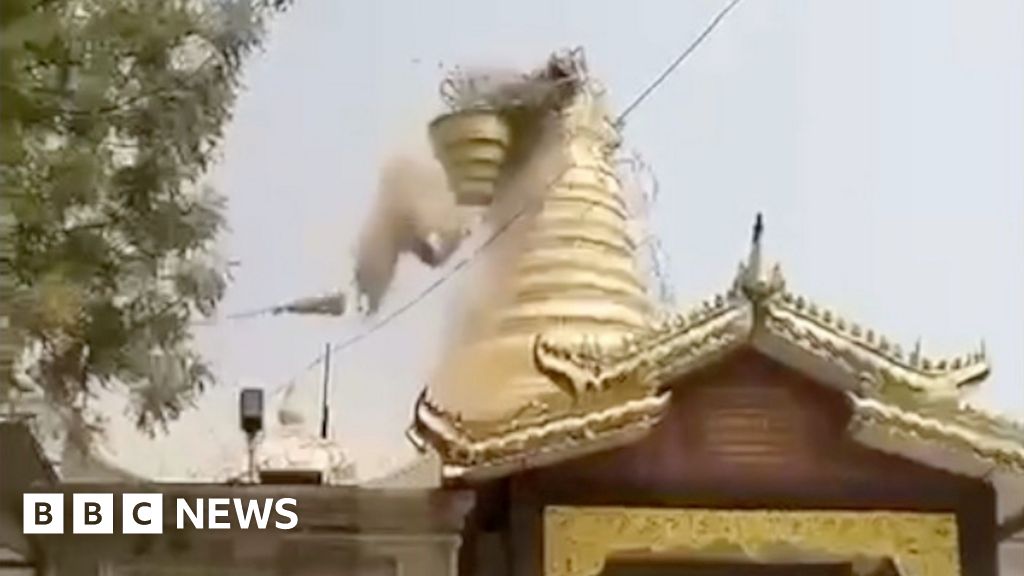Moment of Collapse: Myanmar Pagoda Earthquake Devastates Ancient Structures
A powerful earthquake has struck near Bagan, Myanmar, causing significant damage to several ancient pagodas and temples. The tremor, measuring 6.8 on the Richter scale, sent shockwaves through the region, leaving a trail of destruction in its wake. This devastating event underscores the vulnerability of historical sites to natural disasters and highlights the urgent need for improved seismic protection measures.
The Earthquake's Impact on Bagan's Architectural Heritage
Bagan, a UNESCO World Heritage Site, is renowned for its thousands of ancient pagodas and temples, many dating back to the 11th and 13th centuries. The earthquake resulted in the partial or complete collapse of several of these invaluable structures. Images and videos circulating online show crumbling brickwork, fallen spires, and significant damage to delicate carvings and murals.
Specific Examples of Damage:
- Ananda Temple: This iconic temple, one of Bagan's most recognizable landmarks, sustained considerable damage to its outer walls and decorative elements. Engineers are currently assessing the extent of the structural damage.
- Thatbyinnyu Temple: Known for its impressive height, this temple suffered cracks in its brickwork and the collapse of several smaller structures within its complex.
- Dhammayangyi Temple: While seemingly less affected than others, this massive temple also experienced cracks and damage to its intricate decorations.
The full extent of the damage is still being assessed, with teams of archaeologists and engineers carefully examining each affected site. Many smaller pagodas, less well-documented and researched, may have suffered irreparable damage. This loss represents not only a blow to Myanmar's cultural heritage but also a loss to global history.
International Response and Aid Efforts
Following the earthquake, international organizations and governments have pledged support for Myanmar. Aid efforts are focused on providing emergency relief to affected communities, including medical assistance and temporary shelter. However, the focus is also shifting towards the urgent need for the preservation and restoration of damaged historical sites.
Challenges in Restoration:
- Funding: The cost of restoring these ancient structures will be substantial, requiring significant international funding and collaboration.
- Expertise: Specialized expertise is required for the delicate work of restoring these fragile historical buildings. Many restoration techniques are specific to the materials and construction methods used centuries ago.
- Access: Reaching some of the affected sites may be challenging due to the difficult terrain and the extent of the damage.
Lessons Learned and Future Preparedness
This devastating earthquake serves as a stark reminder of the importance of seismic hazard assessment and mitigation strategies for protecting historical sites. The event underscores the need for:
- Improved Building Codes: Implementing stricter building codes and incorporating earthquake-resistant design principles in future construction projects is crucial.
- Regular Inspections and Maintenance: Regular inspections of existing structures, particularly those in seismically active zones, can help identify potential weaknesses and prevent catastrophic damage.
- Investment in Preservation Technologies: Investing in research and development of innovative preservation technologies can enhance the resilience of historical sites to future earthquakes.
The earthquake in Myanmar is a tragedy, but it also presents an opportunity to learn and improve. By collaborating internationally and investing in both immediate relief and long-term preservation efforts, we can help safeguard Myanmar's precious cultural heritage for future generations. We urge readers to support reputable organizations working on the ground to provide aid and support recovery efforts. Learn more about ways to donate and get involved via [link to reputable charity].

